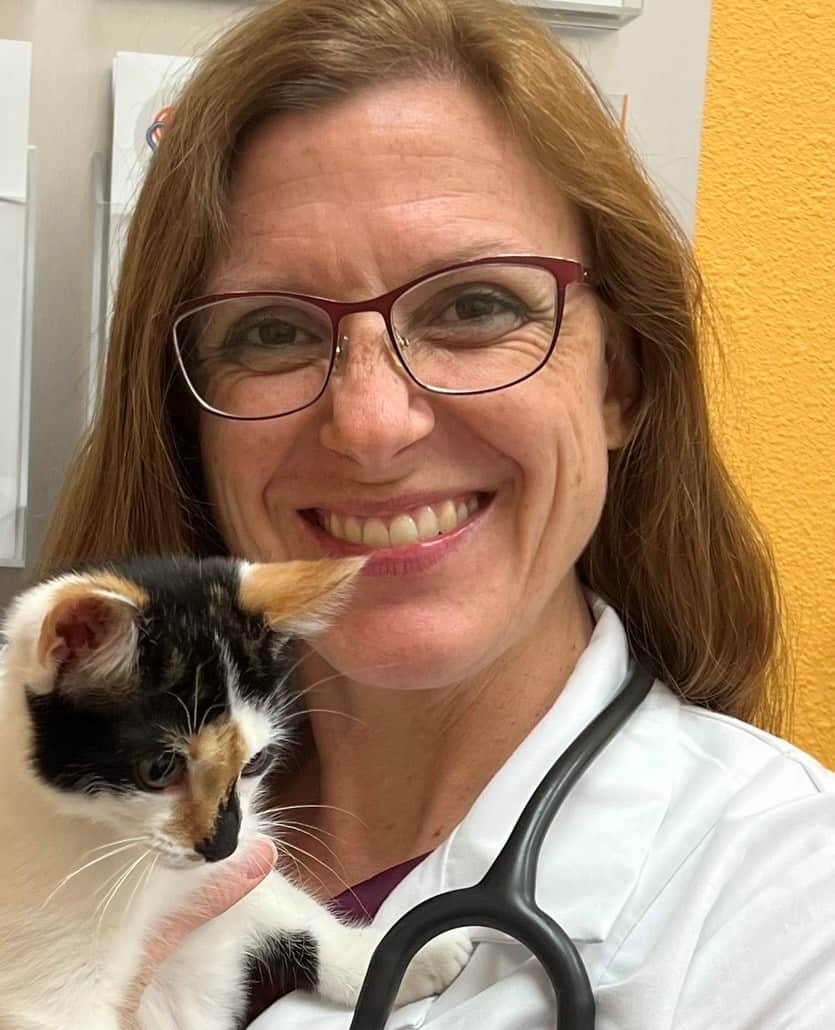Rebound Gastric Hyperacidity in Horses After Discontinuing Omeprazole

Equine gastric ulcer syndrome (EGUS) is a common disease in horses, frequently treated with the proton-pump inhibitor omeprazole to decrease stomach acidity. Some horses being treated with omeprazole, however, suffer rapid recurrence of gastric ulcers upon discontinuing treatment. Tapering the omeprazole dose when planning to discontinue this medication is unlikely to minimize rebound gastric hyperacidity. Instead, caretakers can implement management changes to further protect the horse from developing new lesions.
“EGUS is an umbrella term that refers to horses with lesions in either the squamous (upper) or glandular (lower) regions of the stomach,” said Pamela A. Wilkins, DVM, MS, PhD, Dipl. ACVIM, ACVECC, Veterinary Clinical Medicine Section Head and professor of equine medicine and surgery at the University of Illinois’ College of Veterinary Medicine, in Urbana-Champaign. “Each is actually a separate disease with its own risk factors, but both are essentially a result of damage caused by acid in the stomach.”
Squamous ulcers often occur because of exposure to acidic gastric juices, typically during periods of fasting or intense exercise. “In contrast, glandular disease is believed to result from breakdown of normal mucosal defense mechanisms with gastric acid perpetuating the injury,” Wilkins explained.
In both cases, gastric acidity is the common denominator, making acid suppression key to medical management.
“Omeprazole is a proton-pump inhibitor that suppresses gastric acid secretion to decrease the acidity (i.e., increase the pH) of the gastric juices,” she said.
Veterinarians prescribe omeprazole to treat gastric ulcers, both squamous and glandular. But, according to a recent study, squamous ulcers can recur to pretreatment levels in as little as three days following discontinuation of treatment.
“This phenomenon is thought to be due to ‘rebound gastric hyperacidity’ secondary to abnormally high levels of the hormone gastrin,” relayed Ben Sykes, BSc, BVMS, MS, MBA, Dipl. ACVIM, PhD, FHEA, gastrointestinal disease researcher and professor at Southern Cross University, in New South Wales, Australia.
Gastrin stimulates hydrochloric acid production in the stomach. Under normal conditions, when pH levels decrease (i.e., the stomach becomes more acidic), gastrin is inhibited. When the stomach pH levels increase, more gastrin is produced, which in turn stimulates increased acid output. Omeprazole interferes with this normal feedback loop between gastrin and gastric pH.
“As a result, circulating gastrin levels become elevated in human patients treated with omeprazole, which means that when omeprazole is discontinued, those high gastrin levels immediate stimulate the production of excessive hydrochloric acid, thus rebound gastric hyperacidity,” Sykes explained.
High gastrin levels also cause growth of other cells called enterochromaffin-like (ECL) cells, which are important in signaling for gastric acid production. Increased ECL cell density might also contribute to rebound gastric hyperacidity.
To determine if gastrin levels and ECL cells increase with omeprazole therapy, Sykes’ research team recruited 14 retired Thoroughbred racehorses used for training. Those horses received 2.28 grams (approximately 4.4-5.3 mg/kg) of omeprazole orally, once daily at 4 a.m., 30 minutes prior to being fed, for 57 days. The research team measured the horses’ gastrin levels at baseline, weekly throughout the treatment period, and weekly for one month following cessation of therapy. They measured ECL cell density by assessing serum chromogranin A (CgA) levels.
“As we hypothesized, gastrin levels more than doubled within seven days of starting omeprazole,” said Sykes. “However, gastrin decreased back to normal levels within two days of stopping therapy. This was somewhat surprising because much longer persistence has been reported in humans.”
These results indicate a loss of feedback on gastrin production with omeprazole; however, the increased gastrin concentrations did not persist when omeprazole was discontinued. Therefore, the researchers did not believe the gastrin levels contributed to rebound gastric hyperacidity beyond the immediate post-treatment period.
ECL cell density did not increase during or after treatment, suggesting these important signaling cells also do not contribute to rebound gastric hyperacidity.
“Recurrence of gastric ulcers following cessation of omeprazole still occurs, and rebound gastric hyperacidity might still play a role, but the effect is very short-lived,” said Sykes. “As such, the use of tapering protocols for omeprazole, which are widely used in human medicine and have commonly been adopted in equine medicine, are not justified in the horse—at least for treatment durations of eight weeks and less.”
Instead of tapering omeprazole when discontinuing the medication, Sykes said horse owners should focus on optimizing preventive management practices and removing risk factors during the immediate post-treatment period.
This includes providing adequate roughage, ideally including alfalfa hay, and complete rest during the 48 hours following the last dose of omeprazole. Caretakers should then focus disease prevention primarily on long-term management.
Wilkins offered the following management recommendations:
- Decreasing exercise intensity and frequency, if possible.
- Providing free-choice roughage during the day.
- Offering alfalfa for its inherent buffering capacity.
- Allowing horses access to turnout, if possible.
- Limiting non-steroidal anti-inflammatory drugs (NSAIDs), restricting their use to only when necessary.
“NSAIDs are known to promote EGUS,” added Wilkins. “This class of drugs includes the commonly used medications Bute (phenylbutazone)and Banamine (flunixin meglumine). Further, fasting horses should be limited, particularly if NSAIDs are being used.”
“I’m really excited about the potential impact of this research,” Sykes said. “Removing the need for tapering of omeprazole following short- and medium-term therapy has the potential to save owners hundreds of dollars in unnecessary treatment while focusing prevention efforts on the highest risk period immediately post-treatment.”
He said his team hopes to extend their research to horses treated for longer periods to determine if the same recommendation can be made for those groups, as well.
The study, “Evaluation of the effects of medium-term (57-day) omeprazole administration and of omeprazole discontinuation on serum gastrin and serum chromogranin A concentrations in horses,” was published in the Journal of Veterinary Internal Medicine in August 2023.

Written by:
Stacey Oke, DVM, MSc
Related Articles
Stay on top of the most recent Horse Health news with














